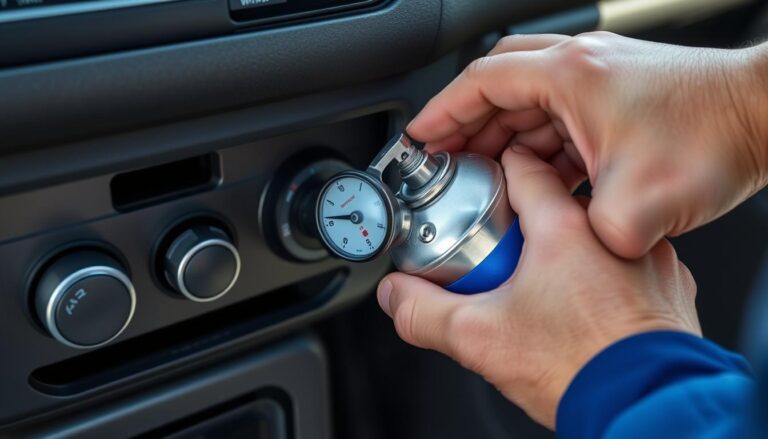A stable table is paramount in both domestic and professional settings. Table stability is not merely a safety measure; it also significantly impacts the visual appeal of a space.
Tables with uneven legs are prone to wobbling, which can result in damage to the table itself or the items it supports. DIY table fixing offers a cost-effective and straightforward solution, requiring minimal effort and resources.
Leveling table legs is a task that, when executed correctly, can dramatically extend the life and functionality of your table. This article will walk you through a 5-step process to ensure your table is stable and level.
Key Takeaways
- Understand the importance of table stability
- Learn simple DIY methods for fixing uneven tables
- Discover the tools needed for leveling table legs
- Follow a step-by-step guide to achieve a level table
- Enhance the longevity of your table with proper leveling
Understanding Why Tables Become Uneven
Tables, by design, are intended to be steadfast, yet their instability can signal a deeper issue. An uneven table transcends mere inconvenience; it impinges upon the table’s utility and safety. Such a condition necessitates prompt attention.
Common Causes of Wobbly Tables
Multiple elements can precipitate a table’s instability. Uneven flooring frequently underpins this issue, as it can induce leg misalignment. Damaged or worn-out legs also contribute to instability. Further, improper assembly or loose joints can exacerbate wobbling. Grasping these potential causes is crucial for diagnosing the problem.

Identifying the Specific Problem with Your Table
To rectify an uneven table, pinpointing the exact issue is paramount. Inspect the legs for any signs of damage or deterioration. Position the table on a flat surface and observe its stability. If it wobbles, identify the uneven leg(s). Employing shims or adjusters can level the table. By addressing the root cause and applying the correct solution, stability can be restored.
Tools and Materials You’ll Need
The initiation of the leveling process for table legs necessitates the compilation of requisite tools and materials. To achieve a stable and even surface, it is imperative to possess the correct equipment.
Essential Tools for Leveling Table Legs
The fundamental tools for leveling table legs encompass shims, adjustable feet, and measuring apparatus such as a level and a tape measure. Shims serve to bridge gaps between the leg and the floor, whereas adjustable feet facilitate precise height adjustments. A level guarantees horizontal alignment, and a tape measure enables accurate leg height measurement.
- Shims
- Adjustable feet
- Level
- Tape measure
Optional Equipment for Different Table Materials
Depending on the table’s material, supplementary equipment may be required. Wooden tables benefit from wood glue and wood shims for adjustments. Metal tables, on the other hand, may necessitate metal files or adjustable metal leg caps. A pencil and paper are also advisable for recording measurements and notes.

How to Level a Table Legs: Step-by-Step Process
Leveling a table necessitates the utilization of appropriate tools and patience. The essence of a successful leveling endeavor lies in adhering to a meticulous sequence of actions. These actions are designed to guarantee the table’s stability and uniformity.
Step 1: Place the Table on a Flat Surface
The initial phase involves positioning the table atop a surface of utmost flatness. This preliminary step serves as a gauge to ascertain whether the table’s legs are uneven. Ensure the surface is devoid of any debris or obstructions that could impede your evaluation.
Step 2: Identify the Uneven Leg(s)
Upon the table’s placement on a flat surface, its stability should be assessed. If instability is detected, pinpoint the leg(s) responsible for the imbalance. Employ a spirit level or a simple test with a small object like a marble to identify the shorter leg. The marble’s inclination towards a leg signifies that leg’s deficiency in height.
Step 3: Apply Shims or Adjusters
Having identified the uneven leg(s), the subsequent step involves the application of shims or adjusters to rectify the table’s levelness. Shims, crafted from materials such as wood or plastic, are positioned beneath the leg to elevate its height. Selection of the appropriate material for shims is imperative, considering the table’s weight and the floor’s type.
Step 4: Test the Table’s Stability
Post-application of shims or adjusters, the table’s stability must be reevaluated. Perform a gentle rocking motion to verify the absence of wobbling. If instability persists, further adjustments to the shims may be necessary. A thorough table stability test is essential to confirm the efficacy of the adjustments.
“A stable table is not just a matter of convenience; it’s also a safety issue. Ensuring your table is level can prevent accidents and damage to the items on it.”
Step 5: Secure the Solution Permanently
The culmination of the process involves the permanent fixation of the solution. If shims have been employed, their attachment to the leg or floor is crucial to prevent displacement. For tables with adjustable legs, ensure that the adjustments are securely tightened. Regularly verify the table’s stability over time to maintain the efficacy of the solution.
Adherence to these steps enables a step-by-step table leveling process, culminating in a stable and even surface. The paramount importance of patience and meticulous attention to detail cannot be overstated in achieving this goal.
Troubleshooting Common Leveling Issues
The process of troubleshooting is paramount in table leveling, as it enables the resolution of unforeseen complications. Despite meticulous planning, issues such as severely damaged legs or uneven floors can still occur, complicating the leveling endeavor.
Dealing with Severely Damaged Legs
When a table leg sustains severe damage, immediate repair or replacement becomes imperative prior to leveling. In certain instances, employing a leg leveler or shim may offer temporary stabilization. Yet, substantial damage necessitates more comprehensive repairs.
Solutions for Uneven Floors
Uneven floors pose a significant challenge to table leveling. Adjustable floor levelers or shims placed under the legs can serve as a viable solution to counteract the unevenness. For more pronounced floor irregularities, the application of self-leveling compound may be required to establish a level surface.
Fixing Tables with Non-Adjustable Legs
Leveling tables with non-adjustable legs presents a more formidable task. Employing shims or felt pads under the legs can facilitate stability. In some cases, the modification of legs to enable adjustability or the adoption of alternative leveling techniques may be deemed necessary.
Leveling Table Legs: A DIY Success Story
Engaging in the process of leveling table legs represents a quintessential DIY endeavor, one that significantly enhances both the stability and aesthetic appeal of your furniture. Through adherence to the 5 straightforward steps delineated within this discourse, one can achieve a notable DIY triumph, culminating in a table devoid of any wobble.
The essence of a table leveling summary lies in comprehending the underlying causes of table instability, accurately identifying the specific issue at hand, and then implementing the requisite adjustments. Armed with the appropriate tools and materials, one can effectively rectify the unevenness of table legs, thus averting future occurrences of instability.
By leveraging the insights garnered from this article, individuals, regardless of their level of DIY proficiency, can confidently undertake the task of leveling table legs. This endeavor not only fosters a sense of accomplishment but also underscores the capability to execute a precise and effective DIY project.
FAQ
What are the common causes of wobbly tables?
The primary factors contributing to wobbly tables include uneven flooring, damage to or wear on the legs, and improper assembly. Tables with non-adjustable legs or constructed from specific materials are more susceptible to unevenness.
How do I identify the specific problem with my table?
To pinpoint the issue, place the table on a flat surface and inspect the legs for any signs of damage or wear. Perform simple tests, such as gently rocking the table or using a level tool, to ascertain the root cause of the problem.
What tools do I need to level my table legs?
Essential tools for leveling table legs include shims, adjustable feet, and measuring tools like a level or tape measure. Depending on the table’s material, additional tools such as wood glue or metal files may be necessary.
Can I level a table with non-adjustable legs?
Yes, it is possible to level a table with non-adjustable legs. Utilize shims or wedges to adjust the height of the legs. An alternative is to employ felt pads or rubber feet to stabilize the table.
How do I secure the solution permanently?
To ensure a permanent solution, employ adhesives like wood glue or epoxy to attach shims or adjusters to the legs. Adhere strictly to the manufacturer’s instructions and verify the table’s stability before finalizing the fix.
What if my table legs are severely damaged?
If your table legs are severely damaged, replacement may be necessary. Consider consulting a professional furniture restorer or contacting the manufacturer for guidance on obtaining replacement parts.
Can uneven floors cause tables to be wobbly?
Yes, uneven floors can contribute to wobbly tables. To address this, use adjustable feet or shims to compensate for the unevenness. An alternative is to employ a floor-leveling compound to even out the floor surface.


